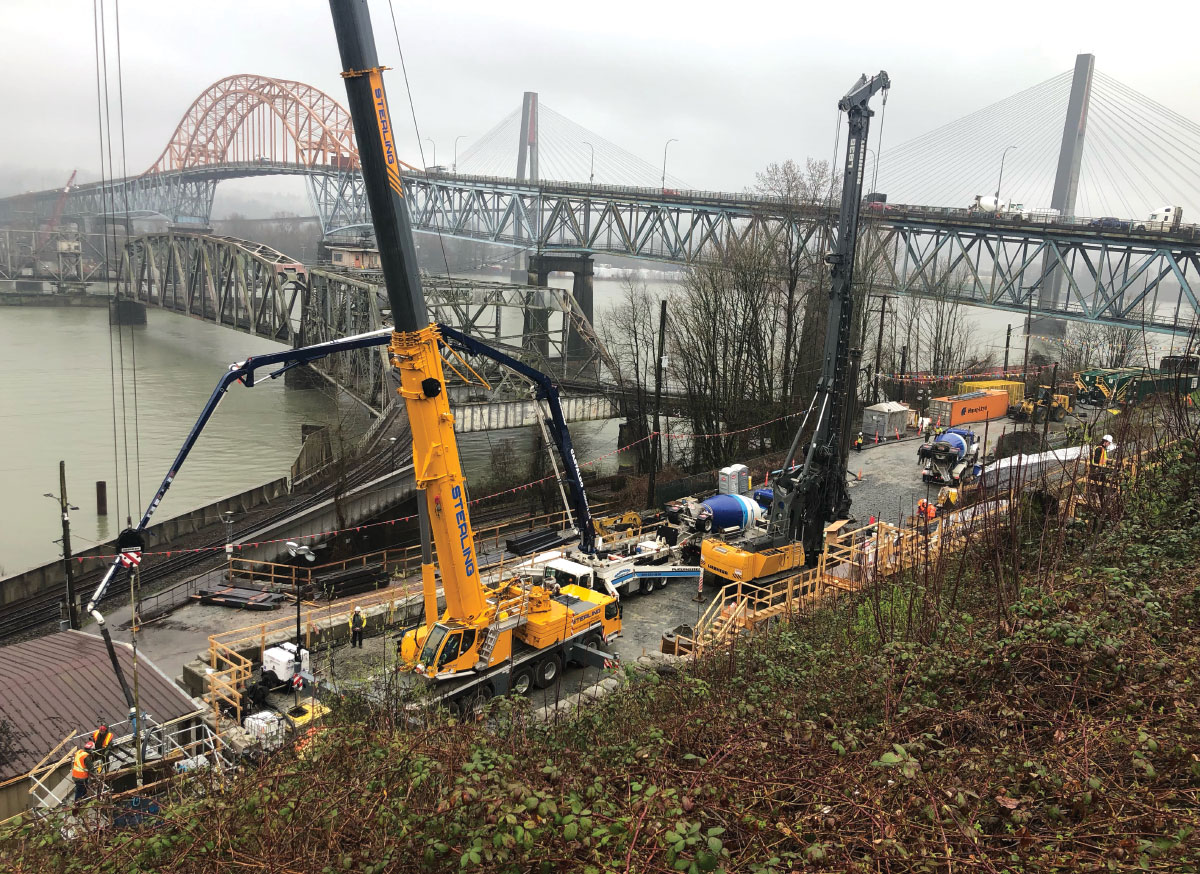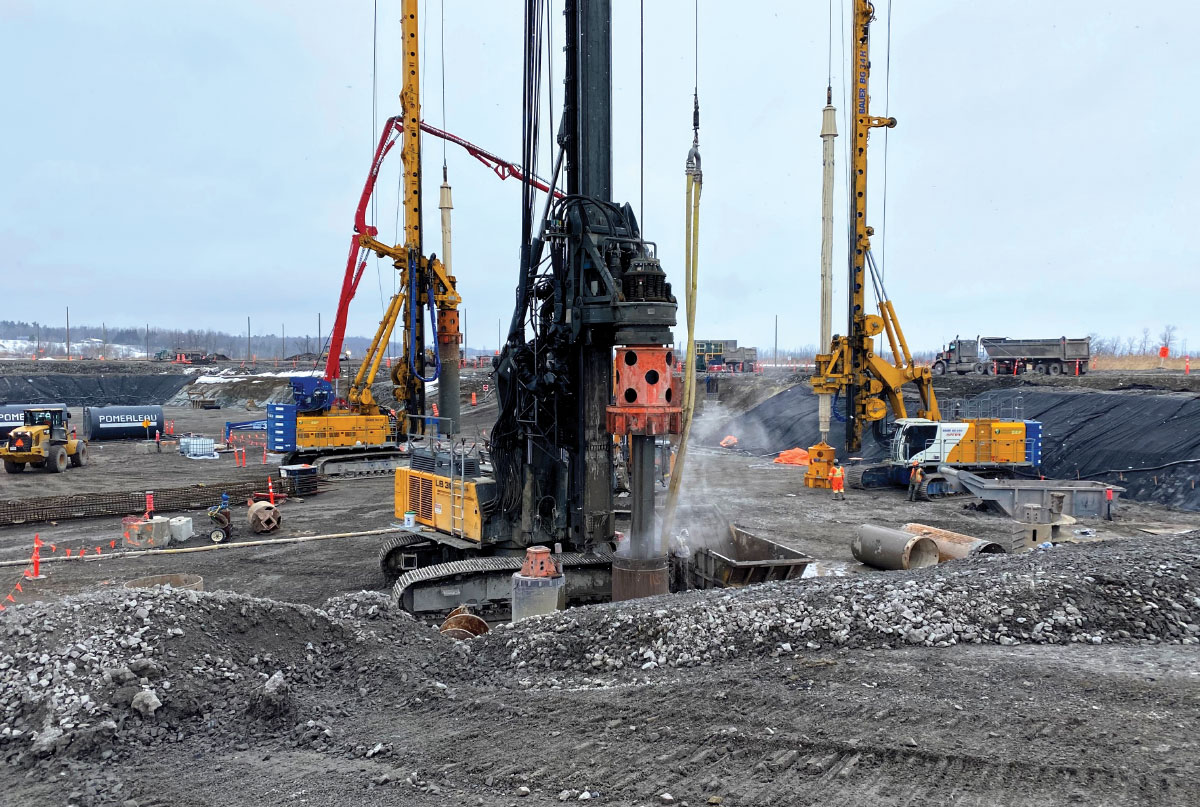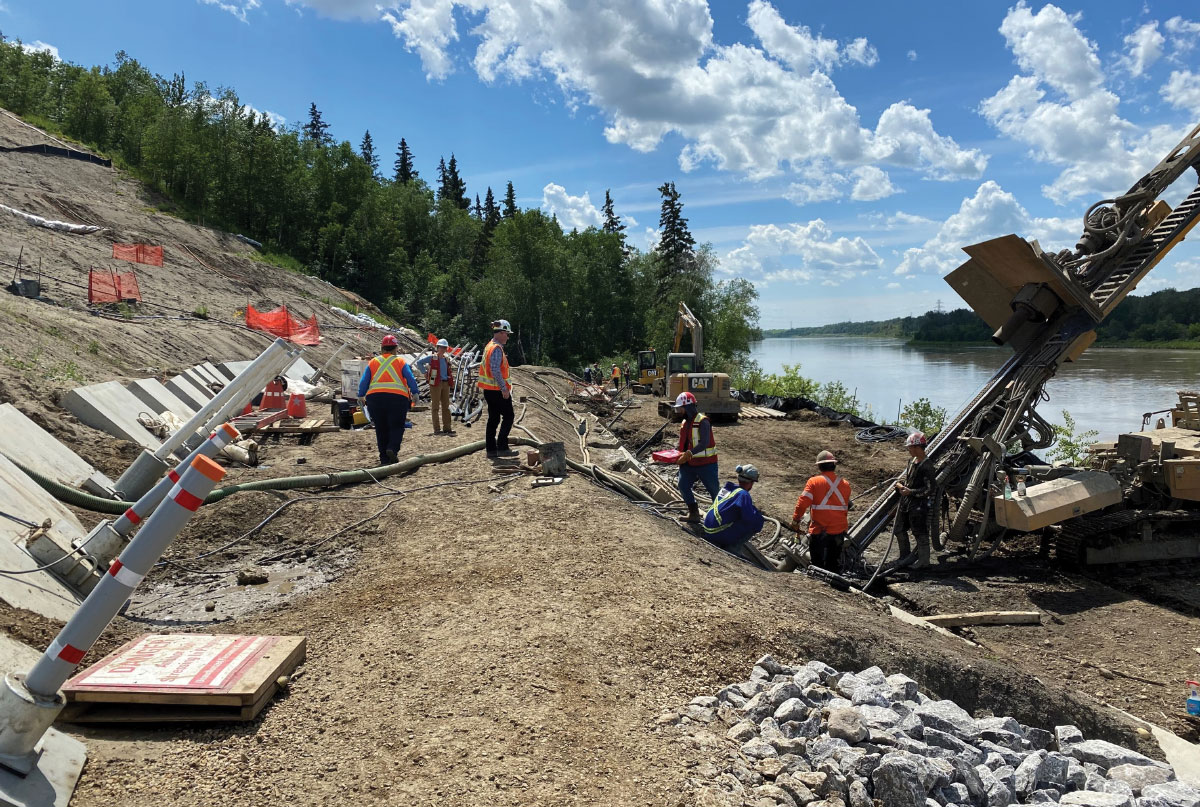
As one of the key pillars in the construction sector, deep foundation plays a crucial role in supporting the stability and integrity of major infrastructure projects. The demands on the deep foundation labour force are constantly evolving due to the adaptation of new technology, higher standards for work performance and new challenges due to the increasing density of cities. Like other sectors in the country, the deep foundation sector faces challenges in finding workers.
“We have been operating under a skilled labour force deficit situation for the last number of years across Canada,” said Jonathan Hazenberg, vice president of Aecon Foundations, a division of Aecon Construction Group Inc. “The key factors influencing the demand include ongoing major public spending into Canadian infrastructure, strong commodity prices driving demand in resource development and an ongoing resilient housing market.”
There are several key roles in the deep foundation labour force, which vary considerably due to the technical nature of the work and different scopes that can be performed. They include foremen, various operators (rotary foundation drill rigs, piling rigs, small diameter drill operators, crane, material handling and earthmoving equipment), grout technicians, front-end mechanics, banksmen and signallers, riggers and labourers. These roles contribute individually and as a crew to the success of a project in areas of safety, planning, communication and execution.
Hazenberg says these positions require a variety of skills. Hard skill sets include working with or around heavy equipment, equipment repair and servicing, survey and layout skills and the ability to do manual work with various hand tools. Soft skill sets include problem-solving, working under varying site conditions such as the different seasons, within deep excavations and on slopes and having good people skills.
Although the sector pays well, it is challenging to find new employees since there can be long shifts, extensive travel and long periods away from home and physically demanding work. There is also a growing generational difference as mature workers were historically accepting of this lifestyle, and younger workers seem less inclined.
Workforce initiatives
Several initiatives focus on recruiting, training and certifying the deep foundation labour force delivered by various educational institutions, such as the Northern Alberta Institute of Technology and Fleming College in Ontario. The international industry offers training programs from different associations and equipment manufacturers. Trade unions also develop other training programs to support workforce skill development.
There are also relatively new certification programs in Ontario and with the National Commission for the Certification of Crane Operators in the United States for the operation of drilling and piling rigs. Training and certification programs for crane operators have been in place for decades and can be a starting point for working with drilling and piling rigs. Training programs for the operation of ancillary equipment, such as front-end loaders and skid steers, are available, but still need formal certification.
Despite these initiatives, finding and training qualified workers in the industry remains challenging.
“The major challenges include the slow growth of the workforce in comparison to the demand, the need for higher skill levels given the increase in the application of technology, competition in the overall labour market and the evolution of the work culture, which is less willing to travel or be away from home for long periods of time,” said Hazenberg.
He also says the industry faces cyclical periods of high demand, which only afford a little time for market competitors to develop the workforce, and low demand, which has economic challenges. When the industry is on the upswing, it is often too busy working on projects to dedicate the time and effort to attract and train new workers, and when times are slow, the industry has less funds available to invest in training.
The overall numbers for the deep foundation labour force are also small compared to other trades, so large influxes of employees are not necessarily required. The industry must retain a core group, but the economies of scale of mounting a large-scale recruitment program are only somewhat applicable. Since there isn’t a need to recruit hundreds of new workers, it suppresses the sense of urgency to recruit and retain staff.
Various ground conditions across Canada determine what deep foundations, shoring, grouting and ground improvement techniques are used and what skills are required to perform them.
“Canada is a massive country with vastly different ground conditions across our major cities and regions, which require a combination of local and national knowledge and experience,” said Hazenberg. “The distribution of projects across Canada can shift with local economic growth or possibly a major industrial project, which can easily overwhelm the local resources and require extensive travel for the labour force.”
Industry collaboration
Industry collaboration among various stakeholder groups and industry associations, such as the International Association of Foundation Drilling, the Deep Foundations Institute, the Ontario Association of Foundation Specialists, various trade unions and construction associations, is increasing to meet these challenges. Major industry players, such as Metrolinx in Toronto, have also been engaging with the industry to assess capacity as it makes its own construction plans.
The deep foundation industry is also considering foreign workers to fill labour shortages. Hazenberg says that Aecon has recruited skilled workers from the Philippines, but it’s a process that can take many months and is driven by the work permit process. This process is subject to changing policies, and long and unpredictable processing times can occur. The international recruitment market is highly competitive with countries such as Saudi Arabia, offering top dollar for deep foundation specialists to develop Neom, its new high-tech city.
Although it’s difficult to predict the future, Hazenberg says the situation is not likely to change anytime soon. The number of retirees could likely continue to outpace the number of entrants, at least for the foreseeable future. It will take a concerted effort to ensure the future workforce will meet the new demands.
Still, Hazenberg says progress has been made, and better career paths have been established. Hence, workers understand the available training, on-the-job support, certifications, benefit programs and well-paying work opportunities.
One of the efforts is to get future employees to recognize these opportunities. That’s why the Construction Channel, a 24-hour construction media network focusing on construction industry news, created a three-part documentary series entitled Six Figures, No Suits, which takes viewers behind the scenes of three large-scale North American drilling projects. As more prospects watch the series, the more likely they are to become industry professionals.
“We are really trying to attract the right type of person to the industry,” said Hazenberg. “It’s for people who enjoy a high pace at work, fresh air, being around large specialized heavy equipment and using new technology. They can feel accomplished and satisfied knowing they’ve met deadlines and worked in interesting environments. For example, Aecon has worked on a highway project in British Columbia where you are literally driving piles into canyons, and you [had] to rappel down from the machine to where the piles had to be driven. So, we are looking for adventure seekers, people with good work ethics and people who just really like seeing the results of hard work, which is contributing to the building of critical projects for our future generations.”
photos courtesy of Aecon Foundations

